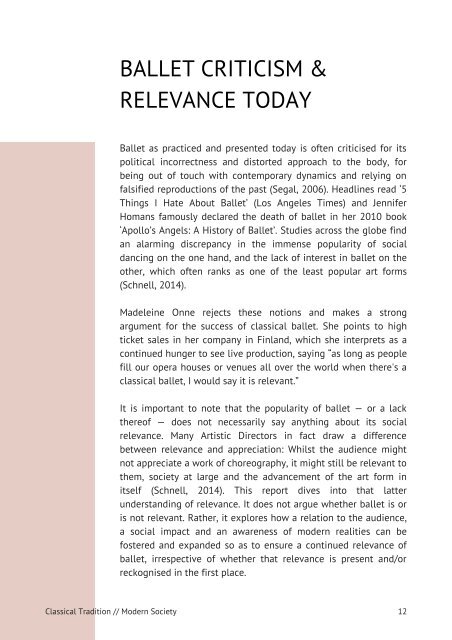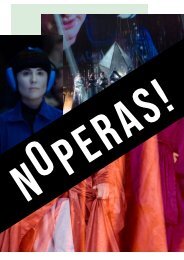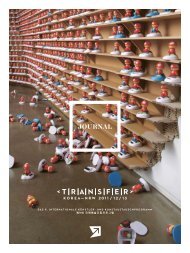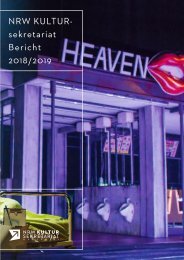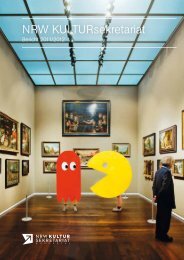Tanzrecherche NRW: Classical Tradition / Modern Society by Mirjam Otten
A handbook for creators and decision-makers on keeping classical ballet relevant
A handbook for creators and decision-makers on keeping classical ballet relevant
You also want an ePaper? Increase the reach of your titles
YUMPU automatically turns print PDFs into web optimized ePapers that Google loves.
BALLET CRITICISM &<br />
RELEVANCE TODAY<br />
Ballet as practiced and presented today is often criticised for its<br />
political incorrectness and distorted approach to the body, for<br />
being out of touch with contemporary dynamics and relying on<br />
falsified reproductions of the past (Segal, 2006). Headlines read ‘5<br />
Things I Hate About Ballet’ (Los Angeles Times) and Jennifer<br />
Homans famously declared the death of ballet in her 2010 book<br />
‘Apollo’s Angels: A History of Ballet’. Studies across the globe find<br />
an alarming discrepancy in the immense popularity of social<br />
dancing on the one hand, and the lack of interest in ballet on the<br />
other, which often ranks as one of the least popular art forms<br />
(Schnell, 2014).<br />
Madeleine Onne rejects these notions and makes a strong<br />
argument for the success of classical ballet. She points to high<br />
ticket sales in her company in Finland, which she interprets as a<br />
continued hunger to see live production, saying “as long as people<br />
fill our opera houses or venues all over the world when there's a<br />
classical ballet, I would say it is relevant.”<br />
It is important to note that the popularity of ballet — or a lack<br />
thereof — does not necessarily say anything about its social<br />
relevance. Many Artistic Directors in fact draw a difference<br />
between relevance and appreciation: Whilst the audience might<br />
not appreciate a work of choreography, it might still be relevant to<br />
them, society at large and the advancement of the art form in<br />
itself (Schnell, 2014). This report dives into that latter<br />
understanding of relevance. It does not argue whether ballet is or<br />
is not relevant. Rather, it explores how a relation to the audience,<br />
a social impact and an awareness of modern realities can be<br />
fostered and expanded so as to ensure a continued relevance of<br />
ballet, irrespective of whether that relevance is present and/or<br />
reckognised in the first place.<br />
<strong>Classical</strong> <strong>Tradition</strong> // <strong>Modern</strong> <strong>Society</strong> 12


